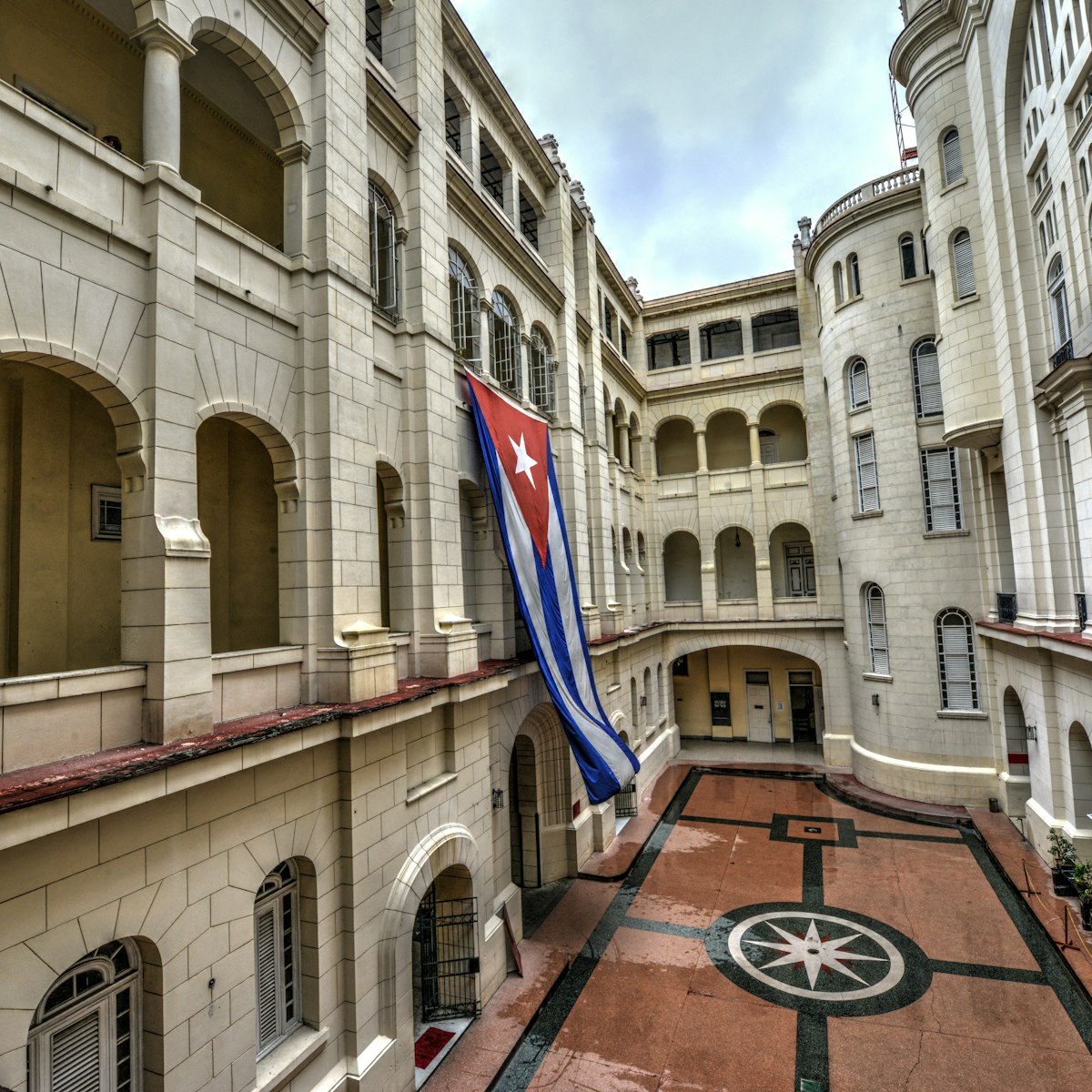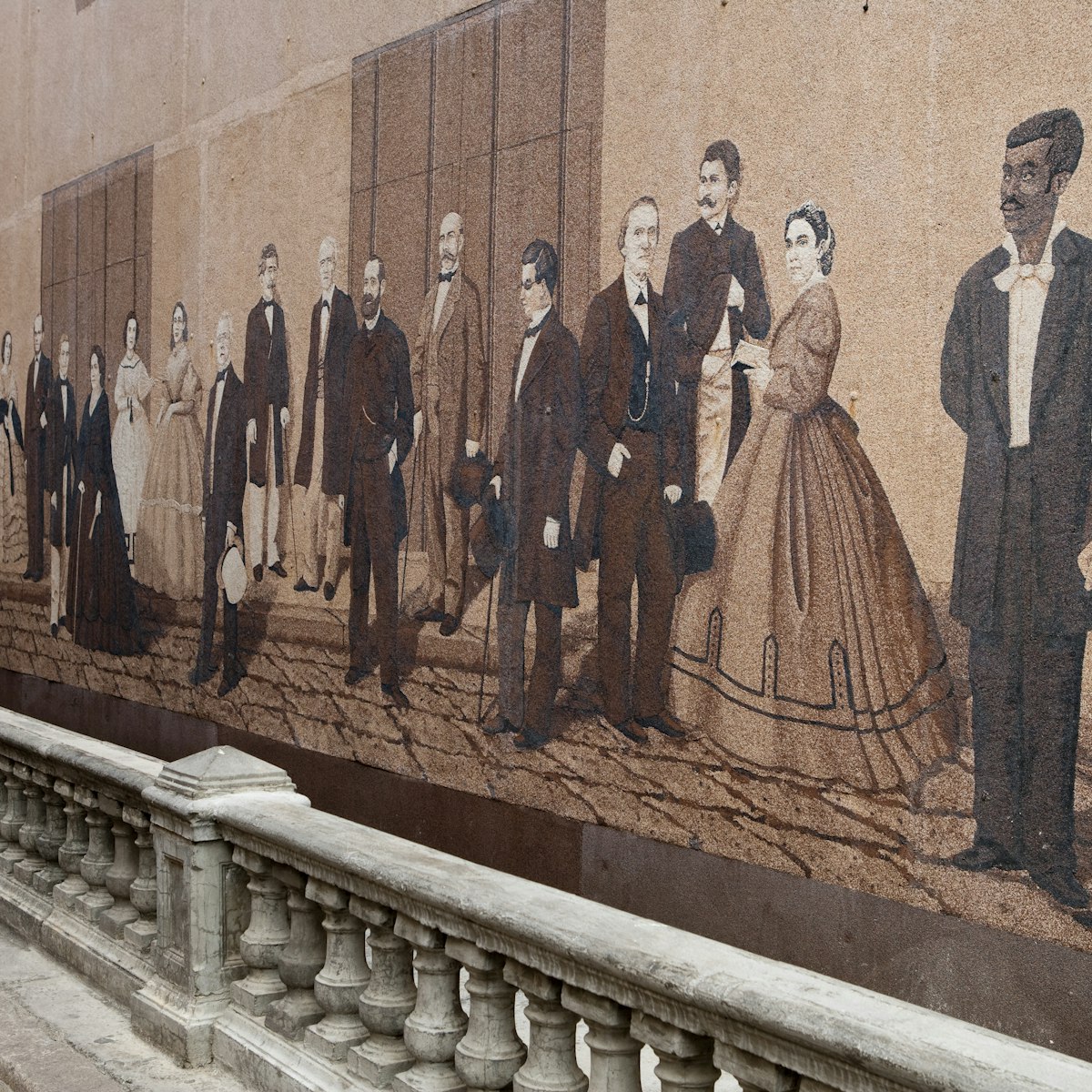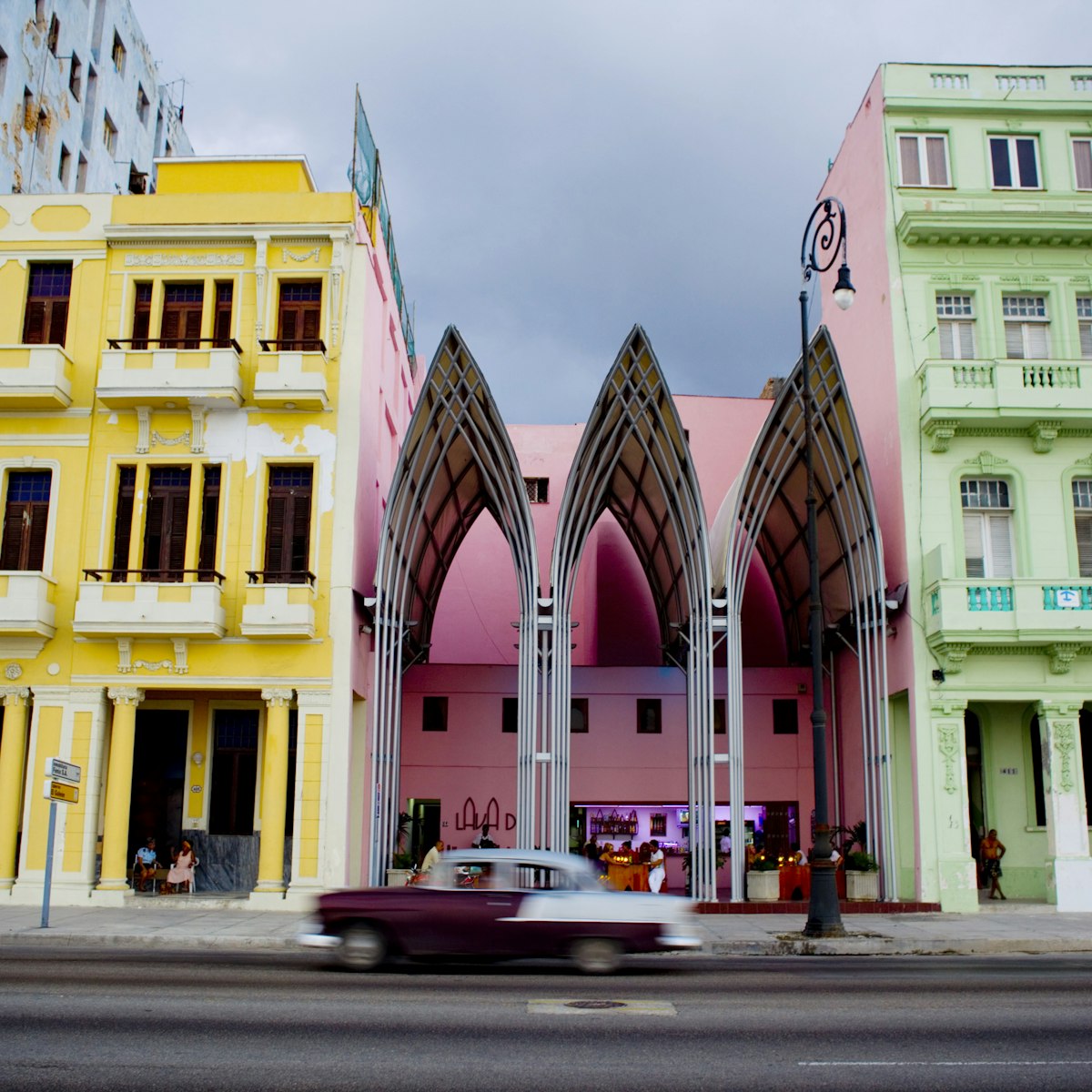Conceived by French urbanist Jean-Claude Forestier in the 1920s, the gigantic Plaza de la Revolución (known as Plaza Cívica until 1959) was part of Havana's 'new city,' which grew up between 1920 and 1959. As the nexus of Forestier's ambitious plan, the square was built on a small hill (the Loma de los Catalanes) in the manner of Paris' Place de l'Étoile, with various avenues fanning out toward Río Almendares, Vedado and Parque de la Fraternidad in Centro Habana.
Surrounded by gray, utilitarian buildings constructed in the late 1950s, the square today is the base of the Cuban government and a place where large-scale political rallies are held. In January 1998 one million people (nearly one tenth of the Cuban population) crammed into the square to hear Pope John Paul II say Mass.
The ugly concrete block on the northern side of the plaza is the Ministerio del Interior, well known for its huge mural of Che Guevara (a copy of Alberto Korda's famous 1960 photograph) with the words Hasta la victoria siempre (Always Toward Victory) emblazoned underneath. In 2009 a similarly designed image of Cuba's other heroic guerrillero, Camilo Cienfuegos, was added on the adjacent telecommunications building. Its wording reads: Vas bien Fidel (You're going well, Fidel).
On the eastern side is the 1957 Biblioteca Nacional José Martí, which sometimes has a photo exhibit in the lobby, while on the west is the Teatro Nacional de Cuba.
Tucked behind the Memorial a José Martí are the governmental offices, housed in the heavily guarded Comité Central del Partido Comunista de Cuba.








